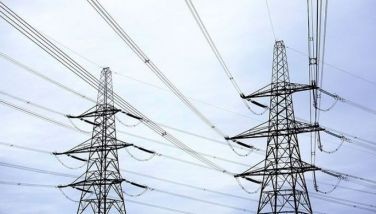ING: BSP shielded Phl economy from liquidity exodus
MANILA, Philippines - The Bangko Sentral ng Pilipinas (BSP) has effectively shielded the economy from a possible drying up of liquidity that could come from the United States’ withdrawal of stimulus, ensuring enough money to drive growth and the financial markets.
“In the near-term, the weight of liquidity flowing out of the SDA (special deposit accounts) will outweigh risks from abroad since that liquidity is going to find a home somewhere,†ING economist Jose Cuyegkeng said in a forum on Wednesday.
“So the central bank has shielded us to a certain extent,†he told reporters after the forum.
Cuyegkeng was pertaining to trillions in funds expected to come out of the SDAs, fixed-term deposits with the BSP, which was recently reformed to allow more money in the system.
By ING’s estimates, a total of P200 billion came out of the facility today, when the BSP told trust entities to remove 30 percent of their outstanding singular investment management accounts from the SDA.
About a trillion pesos more are also on the way out, Cuyegkeng said, once the complete phase-out of IMAs takes effect by Nov. 30 as per BSP Memorandum 2013-021 issued last May. As of July 12, SDA deposits totaled P1.79 trillion.
Money out of the SDA could flow into the bond market, where yields are expected to hit their lowest for the year. On Monday, the government issued P100 billion in retail Treasury bonds at a coupon rate of 3.5 percent.
The equity market could also share some of those funds, he pointed out, while some may find their way back to the BSP in the form of unit investment trust funds.
“We’ve got a situation where funds will be used by the banking system while some may eventually find their way in equities, UITFs, bonds or back as central bank deposits,†Cuyegkeng explained.
Funds that will flow out to the economy are “not going to bloat†money supply— which grew by fastest in six years last May— “immediately,†hence ensuring inflation will remain within target over the next two years.
Based on ING’s figures, inflation could settle between three- to 3.2 percent this year, slower than the 3.7 percent forecast in February. For 2014, it may accelerate up to 3.8 percent, unchanged from six months ago.
The BSP has set a three- to five-percent target for this year and the next.
On growth, Cuyegkeng projects the Philippine economy could expand by 7.3 percent this year, up from February’s 6.1 percent estimate. For next year, it could slow to 6.5 percent, still up from 5.9 percent originally.
“The first-quarter performance was strong, plus the strength of government spending is pushing our growth forecast (up). We have the domestic demand story as well,†Cuyegkeng said.
The “quite solid†fundamentals could provide additional cushion for the Philippines amid expectations the US will scale down its $85-billion quantitative easing (QE) later this year and completely end it by 2015.
Rob Carnell, ING chief international economist, said fund managers are bound to make a “distinction†among strong and weak Asian countries, with the former still seen to enjoy some inflows even once QE ends.
“Within emerging markets, there will be a distinction. We see greatest pressure (from QE taper) on anyone with current account deficit and high inflation,†he told reporters.
“It’s kind of not your problem. It is a problem for other countries in the region,†he added.
- Latest
- Trending
































